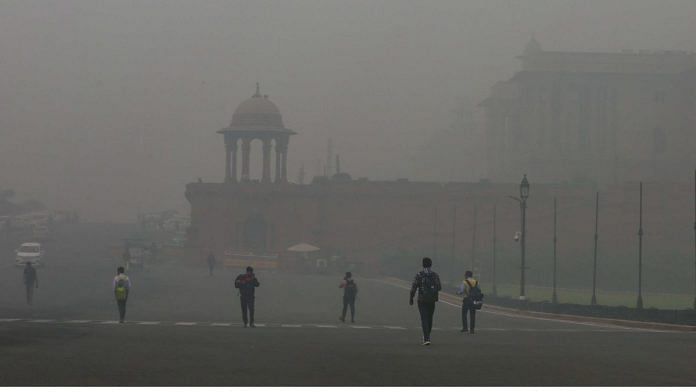New Delhi: The Air Quality Index (AQI) in Delhi and its National Capital Region on Thursday morning remained under the “very poor” category with the Graded Response Action Plan (GRAP) II norms already in place.
According to the Central Pollution Control Board (CPCB), the overall Air Quality Index (AQI) in the national capital stood at 362 as of 6 am today.
The AQI in the RK Puram area of south-west Delhi remains “very poor” at 362, as of 6:00 am today. The AQI at Patparganj also remains “very poor” at 361.
The AQI at India Gate and the surrounding areas was recorded at 353, classified as “Very Poor” by the CPCB.
The Air Quality Index near AIIMS and the surrounding areas was recorded at 342. The AQI around the Akshardham temple was recorded at 350 this morning. Anand Vihar area recorded at 428, in the ‘Severe’ category.
A day after Diwali, Delhi’s air quality was recorded in the “very poor” category on Tuesday. As per CPCB, the overall AQI in the national capital stood at 351 as of 4:00 PM.
Meanwhile, Commission for Air Quality Management in NCR and Adjoining Areas’ (CAQM) sub-committee on GRAP comprehensively reviewed the air quality scenario in the region as well as the meteorological conditions and air quality forecasts on Sunday and took a call to invoke the 12-point action plan as per Stage-II of the extant GRAP in the entire National Capital Region in an effort to prevent further deterioration of air quality.
Furthermore, the health experts have raised concerns about the rising Air Quality Index (AQI) and its impact on vulnerable groups, particularly children, the elderly, and those with respiratory ailments.
On Tuesday, Dr. Nikhil Modi, Respiratory Medicine Specialist at Apollo Hospitals, explained the seasonal factors contributing to the spike in pollution.
“As winter approaches every year, we see the AQI start to rise because as the air cools, the wind speed decreases, and cold air does not rise, causing pollution to accumulate at lower levels. Before Diwali, we began to notice that the AQI was increasing, and after Diwali, it was anticipated that the AQI would continue to rise. As soon as pollution increases, people with allergies and lung problems face issues like difficulty in breathing, coughing, watery eyes, and other symptoms,” Dr. Modi said.
Delhi Environment Minister Manjinder Singh Sirsa highlighted the efforts in controlling Delhi’s pollution on Tuesday, stressing that despite a 21 per cent growth in construction and an 8 per cent increase in new vehicle registrations, pollution levels have remained stable.
Sirsa also shared that Delhi’s post-Diwali air quality is significantly better than in previous years: 2020 (under AAP rule), AQI 462; 2024, AQI 360; and 2025, AQI 351. (ANI)
This report is auto-generated from ANI news service. ThePrint holds no responsibility for its content.






